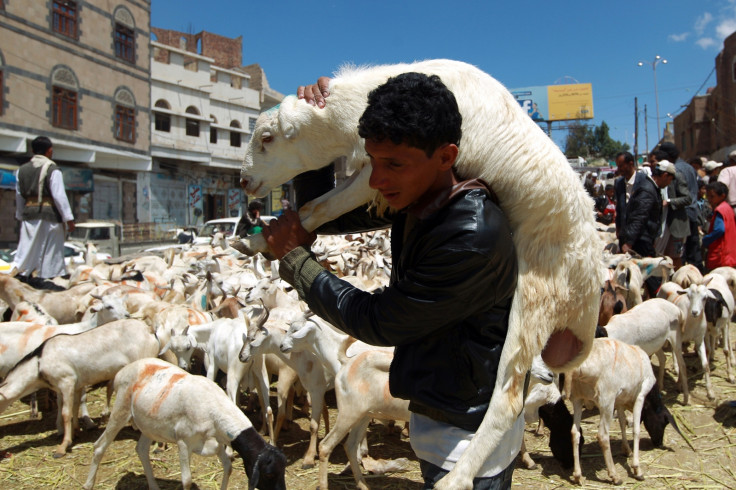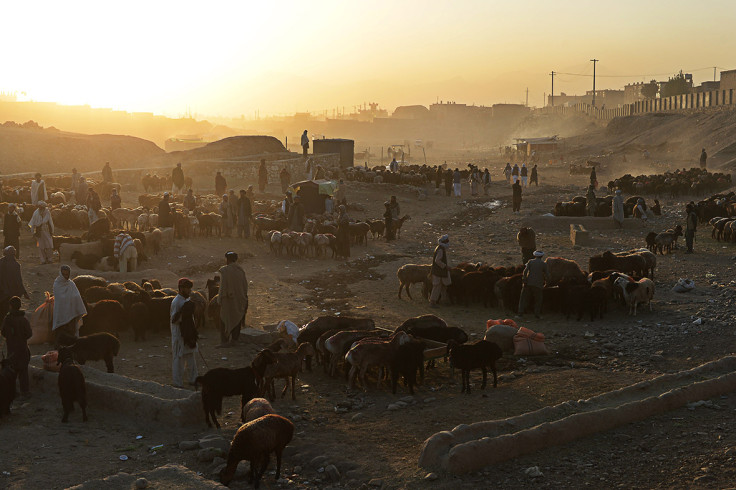Eid al-Adha 2014: History and Facts about the Muslim Feast of the Sacrifice

Eid al-Adha, known as the Feast of the Sacrifice, is the second of two major Eid Muslim holidays. This year, the festival begins on the evening of 3 October, based on the lunar-based Islamic calendar.
Thousands of Muslims around the world are set to celebrate the festival, which commemorates Abraham's willingness to sacrifice his son Ishamel as an act of submission to God.
It also signifies the end of the Hajj pilgrimage to Mecca, Saudi Arabia, which attracts over two million pilgrims annually.
What is the history behind Eid al-Adha?
The festival celebrates the story of Abraham, who was instructed by the Islamic God Allah in a dream to raise the foundations of Kaaba, the sacred shrine in Mecca. Muslims face the cuboid building, located at the centre of Islam's mosque Al-Masjid al-Haram.
Following the call, Abraham set off for Mecca along with his wife and son, Ishmael, trekking across the barren land. In a dream, he saw himself sacrificing his son for Allah's sake. When he told Ishmael what he had seen, his son asked him to carry out the commandment and said he was ready to give his life for God.
But when Abraham was about to sacrifice Ishmael, Allah spared the boy's life and replaced him with a lamb – which is what Abraham ultimately sacrified.
To commemorate the sacrifice, Muslims sacrifice cows, lambs, goats, rams or other animals on Eid al-Adha and give the meat to the poor. According to the Islamic Research Foundation International, one third of the meat is eaten by immediate family and friends, one third is given to friends and one third is donated to the needy.
If some families do not have animals to slaughter, they can donate money to charities that will provide meat to the poor.

Facts about the festival
Other names for Eid al-Adha are the Major Festival, the Greater Eid (Kurban Bayram), Eid a Qurban or Bagr'Eid.
Like Eid al-Fitr, the festival begins with a Sunnah prayer of two rakats, followed by a serman called a khutbah.
The festival starts on the 10<sup>th day of Dhu al-Hijjah - meaning "possessor of the pilgrimage" - the 12<sup>th month of the Islamic year according to the Islamic calendar.
While Eid al-Adha is always on the same day of the Islamic calendar, the date on the Gregorian calendar varies from year to year since the Islamic calendar is a lunar calendar and the Gregorian calendar is a solar calendar.
Muslims may purchase an animal known as Udhiya to sacrifice, which must adhere to strict standards required for the meat to be halal.
The festival is marked by the giving of presents, such as clothes. Muslims visit family and friends, and older family members often give children money.
In Pakistan alone, nearly 10 million animals are slaughtered on Eid days.
During Eid al-Adha and the days preceding it, Muslims chant the Takbir. Meaning "God is the greatest", it is a common Islamic Arabic expression used in formal prayer, the call for prayer and as an informal expression of faith.
Muslims are encouraged to prepare themselves for Eid, including: making wudhu (a purification procedure), preparing personal cleanliness and their best clothes.
On the first morning of the festival, Muslims attend morning prayers at local mosques. It believed to be better to take a different route back home than the first taken to reach the mosque.
© Copyright IBTimes 2025. All rights reserved.




















